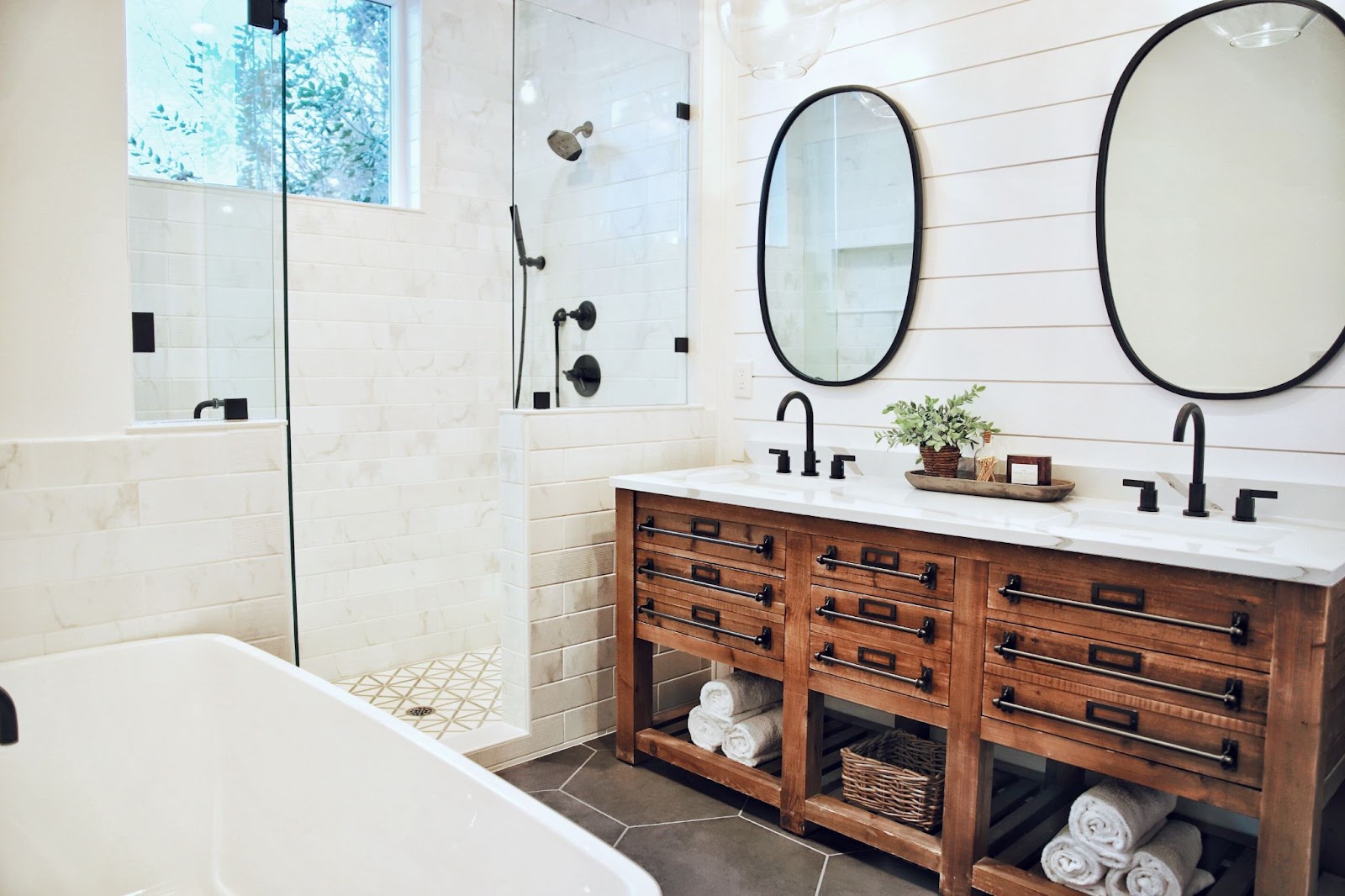Cost of Living Crisis: How to Save Water

Since April 2022, water bills have risen by 1.7 percent. “The rise is small compared to the 50 percent jump in energy prices but has compounded the cost-of-living crisis” and has pushed “prices up from roughly £7 to £419 a year.” (The Independent)
Water is charged per unit used, if your home has a water meter. Since 1990, water meters have been installed in all newly built properties, “to calculate water bills so you are only charged for the amount of water you actually use.” (Age UK)
Yet, water usage across the UK remains high according to the latest figures from Statista. As of 2021, 152 litres of water per day were used by the average person in England and Wales, with 145 litres per person as a three-year rolling average. Essentially, “a household of four could potentially use more than 500 litres of water a day.” (Statista)
So, it’s natural to be concerned about rising water bills, but fortunately there are many ways to lower water usage.
11 Ways to Save Water
The experts at Bathing Solutions have recommended eleven easy methods, which can help reduce water bills and move you towards a greener, eco-conscious future.
1. Modernise your toilet
We don’t tend to think about how many litres of water our toilet flushes consume. Modern dual flush toilets can use as little as 2.6 litres to flush, whilst older models may use as many as 14! That’s quite the difference in terms of your water usage. Make sure to consider flush efficiency in any bathroom updates and redesigns you have in mind.
2. Buy (or make) a cistern displacement device
Toilets account for a third of water used in the home per day! So, if bathroom updates like modernising your sanitary ware aren’t on the agenda right now, try an easy fix on your toilet’s water usage by purchasing a cistern displacement device. Alternatively, create your own by filling an empty plastic bottle with water and adding it to your cistern. This can save three to four litres every time you flush!
3. Install a high-efficiency showerhead
These showerheads use as little as six litres per minute, whilst maintaining brilliant cleaning function. That’s a pretty mammoth water saving of twenty litres per five-minute shower compared to a non-efficient showerhead. If bathroom fittings redesigns aren’t on the horizon, save water in the shower by consciously trying to minimise shower time (always keeping to under five minutes), and consider keeping a bucket in there with you to catch ‘grey water’ to use this water for other household jobs.
4. Fit taps with flow-controlled aerators
This isn’t a big cost investment but can really lead to water savings. Flow-controlled aerators use less than 800mm of water per minute, saving a huge eight litres per minute compared to a non-fitted tap.
5. Plug your bath!
When running a bath, put the plug in before you even turn the tap on! Whilst this is an everyday scenario for those using walk-in baths, it’s not always the case for regular tub users. It’s tempting to run the tap until the water feels warm, and then add the plug. But in this scenario, you usually have to add cold water at the end anyway to moderate the temperature. Reverse this process and let the cold water be added first, so as not to waste litres of water unnecessarily. If it just takes too long for your hot water tap to heat up, catch that initial cold water in a bucket or watering can, so that you can utilise that ‘waste’ water for the garden, for the kettle, or to go in the fridge for a jug of fresh cool drinking water.
6. Check your toilet for leaks
Your toilet can ‘leak’ from the cistern into the bowl silently and without you knowing, and that can really waste water unnecessarily. Check this at least once a year, by adding a drop of food colouring to the cistern. If the colour has bled out into the bowl within 15 minutes, you likely have a leak that needs attention (make sure to use the toilet soon after so that the colouring doesn’t stain and you can flush it away).
7. Turn off the taps whilst you brush your teeth!
This is a no-brainer, advice which has been added to the backs of toothpaste tubes for years now. But it truly is a waste of water to run clean water whilst you brush your teeth. Instead, turn off until you need to rinse, and save a staggering twelve litres of water every time you brush.
8. Turn off the shower mid-use
Turning off is a bit of a theme here! But turning off the shower whilst you add shampoo and lather up your hair, and whilst you soap yourself, can save you 680 litres in wasted water per month.
“If a family of four reduced their shower time by just one minute, they could save £45 on metered water bills, up to £52 on energy bills and as much as 11,648 litres of water a year.” (Thames Water)
9. Turn off whilst you soap your hands
We’ve all committed to twenty-second handwashing, but that can lead to wasted water if you leave the tap on whilst you make sure every inch of your hands is soaped up. Instead of wasting water, try wetting your hands, then turning off the tap before soaping up. Complete your soaping and then turn on again to rinse off.
10. Stop that drip!
Leaky taps are surprisingly easy to get used to, but even just one drip every second means 22 litres of water wasted in a day! Get a plumber in to get any leaky taps fixed as soon as you notice a problem.
11. Stay ‘grey’!
Water that’s been used in the bath, shower or washing machine is called ‘grey water’, as it contains any dirt as well as the cleaning products you used. Consider collecting this ‘grey water’ – whether with a bucket in your shower or scooped from your bath after use. Be careful to maintain your safety, especially in a walk-in shower, as your wellbeing is a primary consideration. Ditto with a wet room.
Although you obviously shouldn’t use your bathwater for drinking, you can still use this ‘used’ water for cleaning your home, to flush the toilet or even to water the garden, to minimise water wastage. ‘Grey water’ can be a really useful addition to your plant watering and can be used by everyone in times of drought. Bear in mind though that some soils (for example clay-rich ones) won’t benefit from the regular addition of any soap contaminants. But during a drought, it’s still a great idea.






